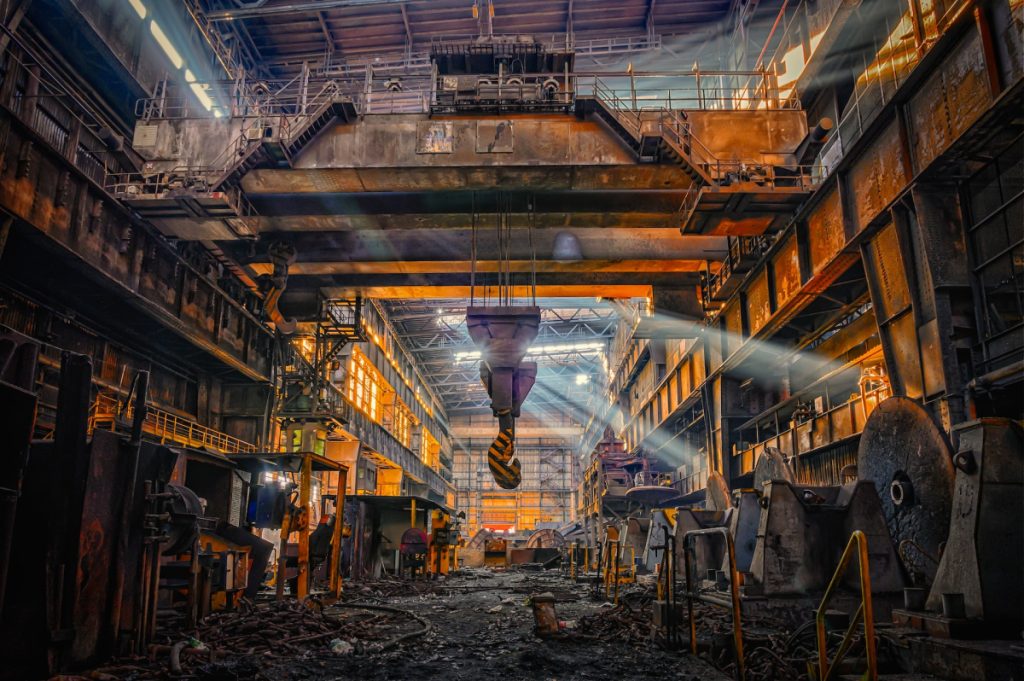- Identifying and improving bottlenecks can significantly enhance efficiency in a steel mill environment.
- Investing in technology, like IoT sensors and automation, leads to optimized operations and reduced costs.
- Workforce optimization, including recruiting, training, and equipping, boosts productivity and minimizes errors.
- Prioritizing safety, considering outsourcing, and reducing waste contribute to long-term success and profitability.
- Proactive maintenance and regular inspections are essential for a safe and efficient steel mill environment.
As a business owner or entrepreneur, you always look for ways to optimize your operations and maximize your profits. One industry that can benefit significantly from increased efficiency is the steel mill environment.
When running a steel mill, every second counts, and every cost-saving measure can be the difference between success and failure. This blog post discusses some strategies for streamlining operations in a steel mill environment, from improving processes to investing in technology.
Identify Bottlenecks and Streamline Processes
The first step in enhancing efficiency in a steel mill environment is identifying bottlenecks in your production process. This involves analyzing every manufacturing process step, from raw material intake to finished product output. Look for steps that take longer than they should or where materials pile up and slow things down.
Streamline Processes
Once you’ve identified these bottlenecks, you can work on streamlining processes to speed things up. This might involve reorganizing your production line, investing in new equipment, or automating some processes.
Reduce Waste
You should also take steps to reduce waste in the production process. Finding ways to reduce energy consumption, reuse materials where possible, and minimize scrap can help you increase factory efficiency without investing heavily in new technology.
Invest in Technology
Investing in new technology is one of the best ways to increase efficiency in a steel mill environment. Many technological advancements can help you optimize your operations, from automated machinery to advanced data analytics.
IoT Sensors
For example, IoT sensors can be used to monitor equipment performance in real-time, giving you insights into when machines are likely to fail. This can help you schedule maintenance proactively and avoid costly downtime.
Automation
Additionally, investing in automation can reduce manual labor costs and help you achieve greater precision with your product. You can create a more efficient steel mill environment by leveraging the latest technological advancements.
Optimize Your Workforce
Another key aspect of optimizing operations in a steel mill environment is ensuring your workforce works as efficiently as possible. This may involve hiring new employees, cross-training workers to perform multiple tasks, or implementing new training programs to help workers improve their skills. When your workforce is well-trained and knowledgeable, they’re more likely to work faster and with fewer errors, leading to more efficient operations.
Quality Equipment
Additionally, consider investing in quality equipment and tools your workers can use to do the job faster. This also includes ensuring all equipment is properly maintained and functioning as it should be. Having reliable, high-quality tools will help minimize unnecessary downtime and keep operations running smoothly.
Focus on Safety

Enhancing efficiency in a steel mill environment can’t come at the expense of safety. Safety is critical in any manufacturing environment, but it’s essential in steel mills where workers deal with hazardous materials and heavy machinery.
Protect Equipment
To increase safety within the facility, you should use durable SAG feed and discharge end liners. These liners are designed to provide full 360-degree coverage and protect the equipment from abrasion, corrosion, and impacts that can lead to serious injury or death.
Regular Inspections
In addition to protecting the equipment, it’s also important to have regular inspections and maintenance. This will help keep your machines running optimally, which in turn can help improve efficiency.
Prevent Accidents
By putting safety at the forefront of your operations, you can help prevent accidents and minimize downtime due to injuries. This may involve implementing new safety protocols, investing in protective equipment, or providing additional safety training to your team.
Consider Outsourcing
Finally, another strategy for streamlining operations in a steel mill environment is outsourcing some of your tasks. Outsourcing can effectively reduce costs and improve efficiency, as it can free up your workforce to focus on more critical tasks. For example, you may want to consider outsourcing maintenance services or certain aspects of your supply chain. This can help ensure you can access the resources required without employing a full-time staff member.
Specialized Professionals

Additionally, outsourcing may provide access to specialized professionals with expertise in specific areas of production or operations. Ultimately, careful consideration should be given when exploring the benefits of outsourcing to determine its appropriateness for your needs and goals.
Streamlining operations in a steel mill environment is critical for maximizing efficiency and profitability. By identifying bottlenecks and streamlining your processes, investing in new technology, optimizing your workforce, prioritizing safety, and considering outsourcing, you can increase efficiency in every aspect of your operations. With these strategies, you can stay ahead of the competition and achieve long-term success.



